- Dec 21, 2018
 0
0- by A2 Marketing Team
Optimizing your website’s performance is crucial. A slow site can drive visitors away – research shows that people are more likely to abandon a page that takes longer than three seconds to load. Page speed can even impact your site’s Search Engine Optimization (SEO).
Fortunately, you can diagnose your site’s current performance by using Google’s PageSpeed Insights tool, one of the most popular speed-testing services. This tool enables you to improve your site’s performance optimization by identifying common problems, and helping you resolve those issues.
In this article, we’ll talk about what PageSpeed Insights does. Then we’ll offer a few tips to help you increase your score and keep your site loading fast. Let’s get going!
Why Your Website’s Performance Matters
Your site’s loading speed has a huge influence on users respond to it. Research shows that internet users can be very impatient. 40% of users will abandon a website that takes longer than three seconds to load. On mobile sites, the number is even higher, at 53%. This means that if your site is slow, you’ll quite literally be driving away potential visitors.
Speed can also affect your site’s Search Engine Optimization (SEO). Google and other search engines tend to pay attention to performance, so a slow-loading site might end up appearing lower on relevant results pages. As a result, less people will encounter your site in the first place.
Fortunately, there are plenty of tools you can use to see how your site is performing and make improvements. We’ll explain how one of these solutions works in the next section.
How Google PageSpeed Insights Works
One way to get an accurate read on how long your site takes to load is by using PageSpeed Insights. Some people voluntarily give Google access to their Chrome user data. PageSpeed Insights works by analyzing the data from people who have visited your site recently. Then, it gives you scores based on how well your site is currently performing.
If you really want to get the most from this service, you can also add Lighthouse’s User Timing API to your site. This will record loading times for even more visitors who come to your pages. The more data there is to analyze, the more accurate your PageSpeed Insights scores will be.
Along with scores, PageSpeed Insights will provide you with suggestions on how to improve your loading times. Even if you’re already following speed optimization best practices, this tool can point out areas you still need to work on. PageSpeed Insights can even identify individual scripts that are slowing down your site.
How to Increase Your Google PageSpeed Insights Score (In 4 Steps)
Over the next few steps, we’ll explain how to use PageSpeed to analyze your site. In addition, we’ll discuss how to resolve some of the errors it informs you about. Let’s start from the top!
Step 1: Scan Your Site
To get started, you’ll need to visit the PageSpeed Insights website. Then, paste your website’s URL into the search bar:

The tool will take a few moments to analyze your site’s performance. Then, it will display scores for the mobile and desktop versions of your site.
Step 2: Review Your Scores and Opportunities
Next, you’ll want to look through your report and examine any areas where you received a poor score. As we mentioned, the results are separated into mobile and desktop versions. Let’s look at the Mobile tab first:
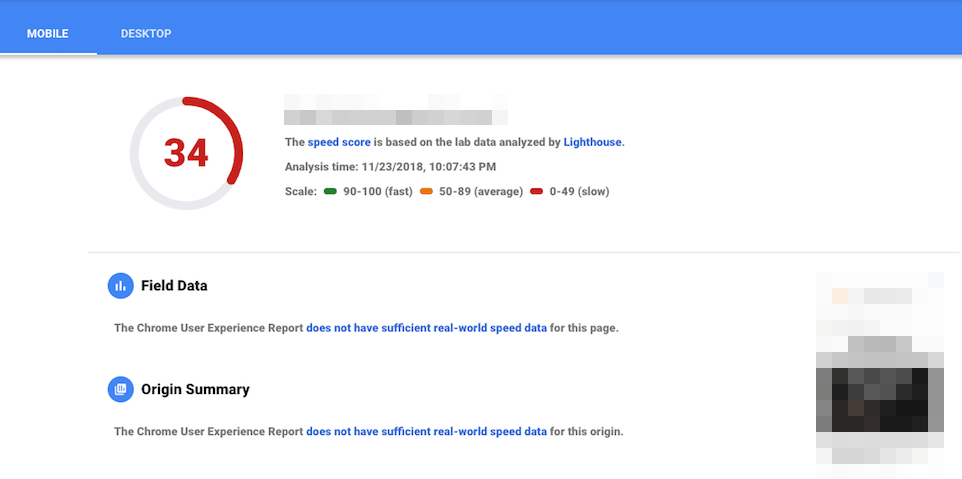
Here, you can see your site’s overall score. Green indicates a positive result, yellow lets you know that you have some areas for improvement, and red signals that your speeds are sub-par. If you scroll down, you’ll also find a more detailed breakdown:
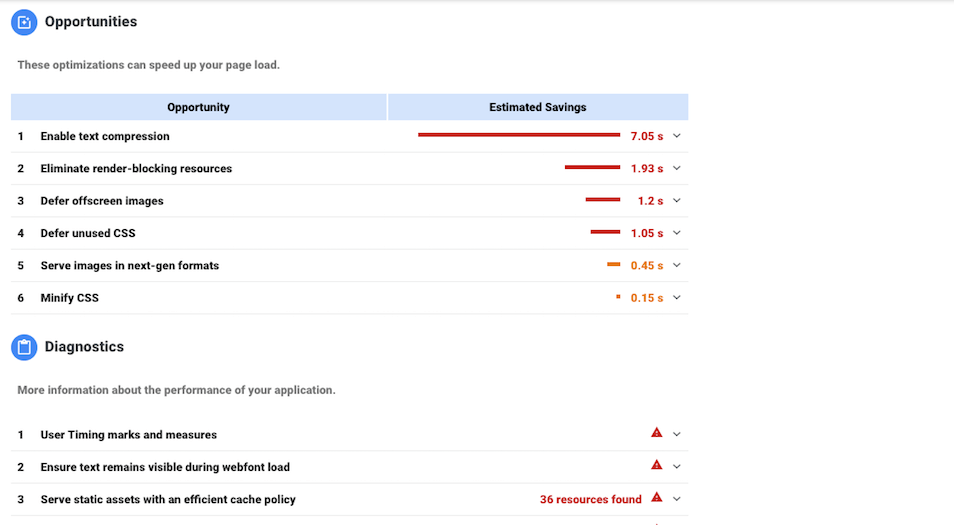
In the Opportunity section, PageSpeed will note suggestions you can use to improve your site. This might include steps like minifying your code or compressing your text. For each one, you’ll also see how much of a difference it’s likely to make.
After you’ve made note of your mobile speed improvement opportunities, click on the Desktop tab at the top of the page. This will show you the overall score for the desktop version of your site:
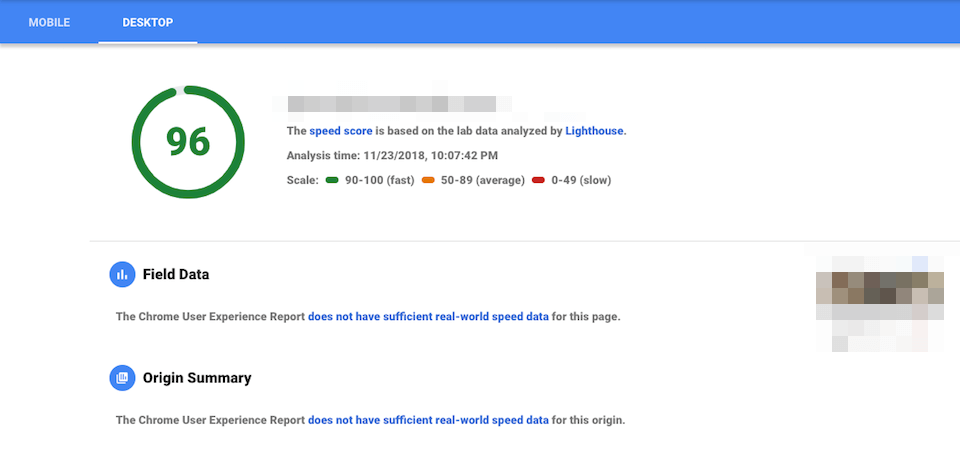
In addition, you’ll again see specific suggestions for improvement. Some of these may be the same as your mobile opportunities, while others may differ entirely. You can also click on the Passed audits section to see areas where your site is doing well:
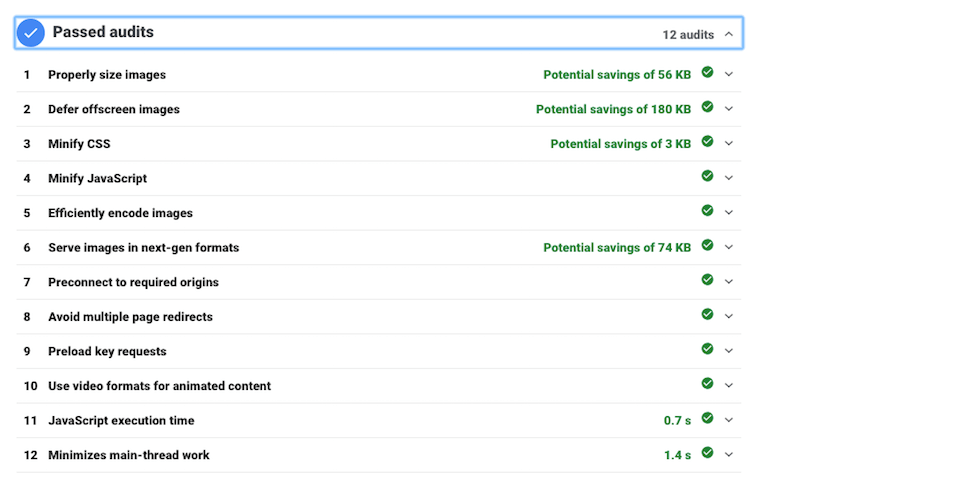
Once you’ve carefully reviewed both the Mobile and Desktop tabs, you’re ready to start taking action.
Step 3: Implement the Suggested Improvements
Once you know what your site’s problem areas are, you’re ready to resolve the issues. In your Google PageSpeed Insights results, every opportunity for speed improvement comes with an explanation of how to resolve the problem. You can click on the relevant suggestion to expand it, and then follow the Learn more link for advice on getting started:
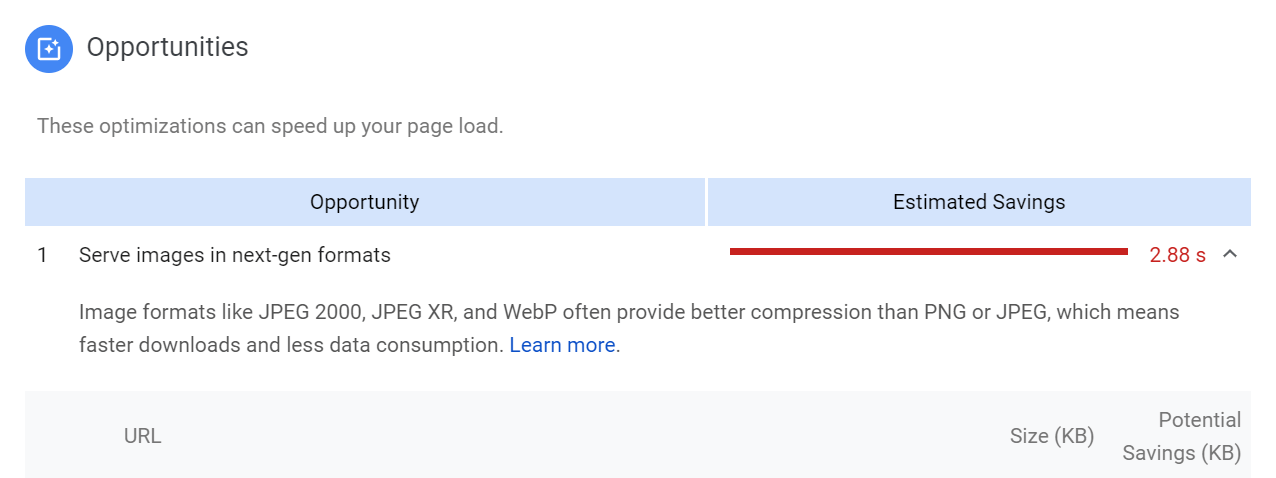
If there are a lot of areas for improvement, you’ll want to focus on the ones that will make the biggest difference to your site’s speed (indicated under the Estimated Savings section). In addition, it’s smart to pay special attention to any opportunities that appear for both the mobile and desktop versions of your site.
If you use WordPress, Drupal, Joomla, or Magento, you can use the A2 Optimized plugin to make some of these changes. Simply log into your control panel, and follow our guide to finding and configuring the plugin’s settings.
Step 4: Re-Scan Your Site
Finally, when you’re done implementing the various optimization suggestions, try scanning your site again. This way, you’ll be able to see if your changes have made an improvement to your scores and loading times, or if you still have work to do.
It’s also a good idea to perform this check periodically – at least every six months. Your page speeds can fluctuate over time, but this way you’ll know if performance starts to slip (and be able to address it right away).
Google PageSpeed Insight Conclusion
Your site’s loading speed is a key metric affecting its success. Pages that are too slow may cause users to abandon your site. Fortunately, you can diagnose performance problems easily by using PageSpeed Insights. This tool identifies areas for improvement in speed optimization, and helps you make key changes to your site.
You can optimize your site using PageSpeed Insights by following these four simple steps:
- Scan your site.
- Review your scores and opportunities.
- Implement the suggested improvements.
- Re-scan your site, and continue to check back periodically.
Image source: Pexels.












